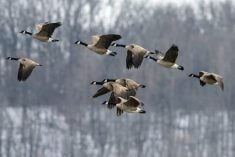Significant rainfall over the weekend will further delay crop development, while the hardest hit regions will see damage from flooded and saturated fields.
Across the province, topsoil moisture conditions are rated as 48 percent surplus.
According to the provincial agriculture ministry, 49 percent of Saskatchewan fall cereals are behind normal development as of June 30. The latest crop report puts 61 percent of the spring cereals, 66 percent of oilseeds and 55 percent of pulse crops behind normal development.
Crops not affected by flooding are in fair to excellent condition.
Read Also

Women who fed a nation
More than 40,000 young women supported the war effort between the 1940s and early 1950s, helping grow and harvest crops amid labour shortages. They were called Farmerettes.
South
Heavy rainfall washed out roads in southeastern Saskatchewan and flooded basements. The Moosomin area received as much as 260 millimetres.
Topsoil moisture conditions on cropland in the southeast are rated at 68 percent surplus.
Crop conditions in that region had been rated fair to excellent before the rainfall, although development was already delayed because of weather.
In the southwest, most crops are rated fair to excellent and are at normal stages of development.
Central
Most of the region has received rain, which will further delay crop development. The east-central region has seen rising water levels after receiving significant rainfall in a short period of time, washing out roads.
Topsoil moisture conditions on cropland are rated as 82 percent adequate in the latest crop report, and many fields are not expected to recover.
In the west-central region, many crops are behind normal stages of development but are rated as fair to excellent.
North
Rainfall has left standing water in many fields, causing crops to yellow.
Topsoil moisture conditions on cropland are rated as 80 percent surplus, although ratings are in excess of 90 percent on crop and hayland in some regions.
Crops in the northeast are rated as poor to good. Ratings are better in the northwest, although development has been delayed by weather.














